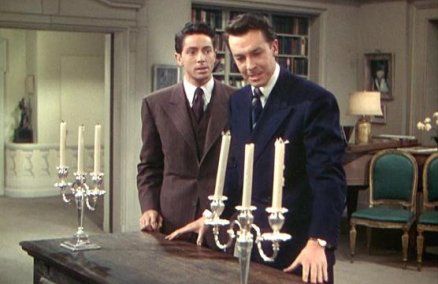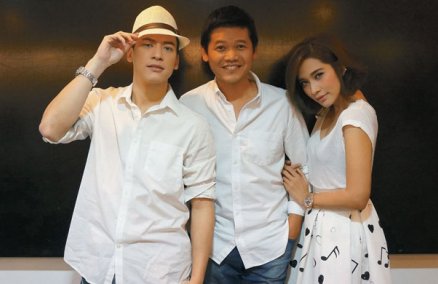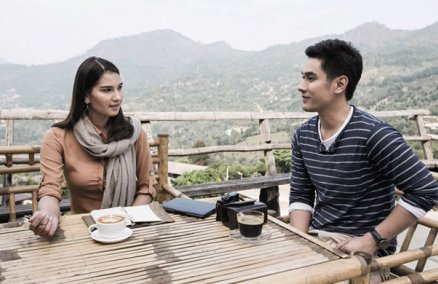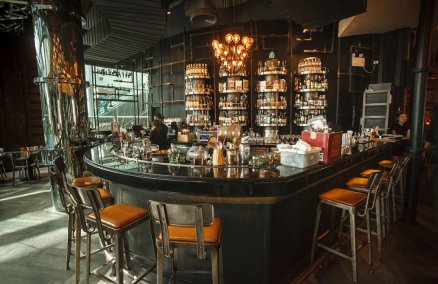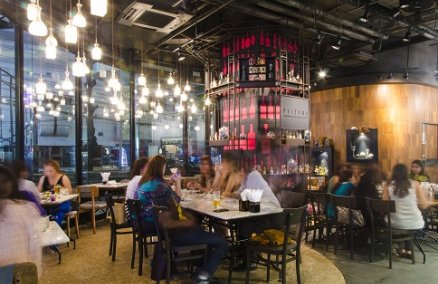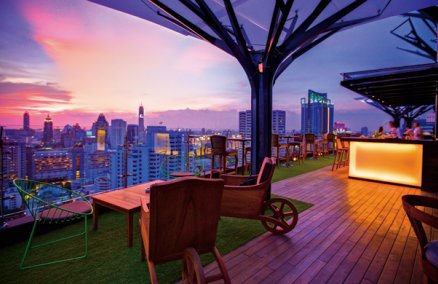The local art scene is finally catching up with the rest of the world, if the latest influx of young artists, who dabble in multimedia art forms such as videography, vector art illustration, graphic design, motion graphics and Internet art, is anything to go by. Over the past year these emerging artists, namely design collectives Momorobo, :Phunk Studio, fFurious and tsunamii.net, and wunderkind Brian Gothong Tan, have been making waves with their modern and cutting-edge artworks that have been lapped up and showcased not only in Singapore, but across the world as well. :Phunk Studio and Momorobo’s works recently traveled to Dublin and Shanghai, as part of the Translate art program that aims to promote local talents alongside established international ones, while Tan and tsunamii.net have held solo and group exhibitions in Melbourne, the Netherlands and Tokyo.
But these showpieces are more than just traveling artworks—they are extremely progressive works that have won international acclaim too. I-S finds out why these young local artists choose to create edgy artworks with the use of multimedia, and how collaborations and international art platforms are propelling their works to the next level.
Sign of the Times
Certainly, today’s breed of young local multimedia artists and creatives are bolder and more tech-savvy in their choice of mediums, compared to artists working purely in fine arts. Utilizing not just traditional art tools such as paper and pen, multimedia artists embrace technology with open arms and minds, and work with various tomfooleries to create utterly modern works.
Brian Gothong Tan (www.briangothongtan.com), whose works include an amalgamation of photography, videography, compositing and various 2D and 3D works, says that it is inevitable that most artists today dabble in multimedia. “The reason why I use different media in my works is because I’m constantly searching for the perfect form to encapsulate my ideas,” he says. “I cannot fully express myself by using one medium. Besides, people these days are bored with just seeing paintings, and they’re always on the look out for something more exciting.”
Alvin Tan, a member of :Phunk Studio (www.phunkstudio.com), one of the first few design collectives dabbling in design and multimedia works, agrees. “Technology has always been a tool for us...as we are living in an era where design is progressing to be appreciated as an art-form, and it cuts across various fields such as vector art illustrations, product designs, motion graphics, interactive media, etcetera,” he says.
Still, local artists and collectives like Tan and :Phunk Studio are not just exploring the various multimedia mediums simply because these tools are more readily available, but because technologies really do help them speed up their work and lessen mistakes in their final artworks. “The advantage of multimedia art is its flexibility to incorporate changes before its final execution,” adds :Phunk Studio’s Tan. “For example, multimedia artists can make many changes before they decide to print an artwork on canvas, or render a motion graphic movie or cast a screen to silkscreen on fabrics. With more traditional art forms, like acrylic or ink or any other mediums, artists are usually working right on the final execution, and that doesn’t allow them much leeway.”
Little Ong from design collective fFurious (www.ffurious.com), who recently organized Pause, an art event that featured solely Net-based artworks, adds that multimedia art allows more diverse and remarkable works to be created. “Back in 1983, when I first had my computer, I could only draw in large pixels using programming software,” he says. “Animation and network access were limited, and the screen color was green. Today, personal computers are a giant leap ahead of those times. With larger processing power, these machines are able to produce much more amazing art, whether it’s digital paintings or interactive animations. When you paint digitally, it is possible to mix different kinds of painting mediums in a single artwork, such as water color with oil paintings, as well as manipulate photos and video imageries.”
The result: Sleeker, bolder and more colorful artworks—from digital prints to other various multimedia art forms. Adds Tsunamii.net’s (www.virtual-marathon.net) Founder Tien Goh: “As technology becomes more affordable for the general public, more artists will see this as a medium and area which they can explore. The video camera, or the computer, is fast becoming the paint brush of the future.”
Innovate and Collaborate
More than just being able to criss-cross over different media, artists dabbling in multimedia are also able to collaborate with other artists working in a similar capacity, creating more cutting-edge works that were previously unachievable. :Phunk Studio recently collaborated with famed Irish artist Aiden Kelly to work on a silkscreen artwork “Electricity,” where both artists conceptualized an elaborate graphic design before translating it onto canvas via silkscreening. Ditto tsunamii.net’s fun Internet artwork “Virtual Marathon,” a piece that functions like a Realtime, multi-player interactive running game, involving 10 artists and designers from the US, Sweden and the Netherlands, and video artwork “Strap It On,” featuring local design collective Momorobo and Thai rock and design group Futon. Collaborations allow these talents to expand their ideas and capacities as artists and image makers.
“Collaborating...is all about merging different ideas from different collaborators and making it into one great piece of work,” says Momorobo (www.momorobo.com) designer Morris Lee. “The whole experience gives us a new insight to the whole art-making process...the freedom to gel and experiment with ideas from other collaborators, and along the way, we share, learn and refine our ideas and works. The knowledge and experience we gain in the process will definitely push our future works to the next level.”
Tsunamii.net’s Goh also states that collaborations by way of multimedia allow him “to build that sense of community among artists. I am interested in communication and the process of working with people to develop a project together, which is especially true in my projects that involve technology.” He adds: “I don’t fancy being an artist who locks himself up in a studio and painting away all day and all night. I believe art is much more than that. That is why all my projects are never done by just me, but involve a team of people.”
Collaborations also allow these artists to consistently bring new ideas to their works, assuring that their final pieces remain cutting-edge. “The different collaborations...place an importance on being radical because every artist has a desire to experience new things,” says fFurious’s Little Ong. Phunk Studio’s Alvin Tan agrees. “Trying new mediums, collaborating and exploring new ways to present an idea has always been a part of how we work, as we are living in a generation of cross-genres, where the lines between technology, art and design have been fused. Certainly, experimenting, collaborating and pushing the boundaries of any new art medium remains essential for artists to always be one step ahead.”
Have Art, Will Travel
Multimedia artists are also savvy not just in terms of the media that they use, but in terms of finding platforms to showcase their works, especially on an international level. Brian Gothong Tan has had shows in Sydney, Venice and California, while Tsunamii.net will present “Virtual Marathon 2” at the new multimedia festival Impakt Festival in Utrecht, the Netherlands, later this year after its successful first installment in Tokyo.
But more importantly, it is traveling art platforms like Translate, which features local artworks by :Phunk Studio and Momorobo alongside world-renowned artists such as Rostarr (US) and Faile (US) in cities such as Auckland, Copenhagen, Dublin, and Shanghai, that will further propel our talented multimedia artists forward. “Showcasing artworks is most important if you want the rest of the world to know about it, or else the works will just be sitting in your studio, no matter how good they are,” says :Phunk Studio’s Tan. “And with platforms like Translate, the art has a chance to travel. It’s important that the works have the ability to move, reach people and cultivate awareness among art lovers.”
Lizzy Johnson, founder of Translate, explains the appeal of our multimedia artists. “We’ve carried out extensive research into worldwide trends and found that consumers are eager to know more about contemporary Asian art across various mediums. It was important for us to include multimedia, animation, music and film artists in our lineup, as they represent what is distinctively contemporary about our art world today.”
Momorobo’s Morris Lee echoes both sentiments. “The exposure generated from Translate is beneficial to the artist as it gives them a new arena to display their works and at the same time, gain valuable interaction and ideas from a whole new group of audience,” he says. “This exchange results in a new combustion of ideas and could elevate the artist’s talent to a whole new level.”
For sure, getting works showcased on an international platform can only be a good thing, as :Phunk Studio and Aiden Kelly’s “Electricity” is rumored to be worth more than US$25,000 ever since it traveled, and its value is still rising. Other traveling art showcases such as the annual multimedia arts festivals Resfest and onedotzero, and the recent Fiction@Love at Singapore Art Museum, also allow works from artists like collective fFurious to be showcased and travel, and further gain them international recognition and exposure.
But more than anything else, multimedia artists should remain at the forefront of what’s bold and relevant in today’s art world if they continuously challenge themselves to create edgy, innovative works that will set them apart. And only by consistently creating impressive works will they be able to take their concepts and ideas to the next level, and travel even further. Momorobo’s Morris Lee concedes: “Our main objective has always been about dealing with new media and expressions, and bringing our ideas to various platforms. At the end of the process, all artists want to create great works that communicates, and the new (multimedia) medium will be the transporter for us to do so.”


















